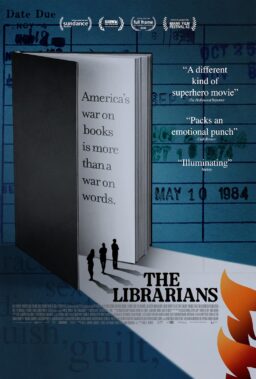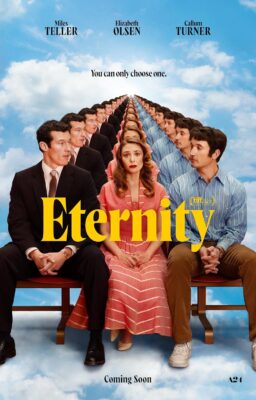It has now been 12 years since “The Twilight Saga: Breaking Dawn – Part 2” came out—12 years since Kristen Stewart had anything to do with the franchise that more than likely will end up being her biggest moneymaker. Those five films, earning about $3.4 billion worldwide, was how much of the world first got to know the actress. Sure, she’d previously appeared in films like “Panic Room,” “Catch That Kid” and “Zathura,” but the “Twilight” series was the breakthrough and also the albatross—the slightly cheesy YA blockbusters she’d have to live down if she wanted a respectable career afterward. Twelve years ago, those prospects were uncertain, but the arthouse success of the recent “Love Lies Bleeding” only further underlines how far she’s traveled from then to now. These days, she’s hailed as indie royalty, a hip Oscar-nominee who’s worked with some of cinema’s finest filmmakers. But it didn’t happen overnight.
If you’d like to learn exactly how the transformation happened—or if you just want a victory lap by rewatching some of Stewart’s best performances—the Criterion Channel has programmed her three most pivotal post-“Twilight” movies. “Starring Kristen Stewart” puts a spotlight on “Clouds of Sils Maria,” “Personal Shopper” and “Certain Women,” which all came out in a span of two years during the mid-2010s. At the time, they were revelations. But with hindsight, we can now see them as the period when Kristen Stewart became Kristen Stewart.
Not that Stewart, who turns 34 next week, didn’t do serious work before this trio of films. As a teen, she was cast in Sean Penn’s “Into the Wild” and played a troubled young person in “Adventureland.” But the moody, melodramatic “Twilight” flicks reduced her and co-star Robert Pattinson to bland pin-ups, forcing them to push back against a public perception that they were lightweights. (In Stewart’s case, it didn’t help matters that her first major film after her “Twilight” stint, “Snow White and the Huntsman,” which opened a few months before “Breaking Dawn – Part 2,” was a disposable action-adventure slog that got attention primarily because the tabloids discovered Stewart had an affair with the film’s director, Rupert Sanders.)
Not surprisingly, then, “Clouds of Sils Maria” was a godsend, a sophisticated drama about the complicated relationship between an American assistant (Stewart) and her boss, a French movie star (Juliette Binoche). A commentary on aging and celebrity, the film, from acclaimed French writer-director Olivier Assayas, had attracted Stewart because of its exploration of the perils of navigating stardom—a topic the early-twentysomething understood painfully well. (Long before the Sanders affair, she was already a gossip-rag fixture thanks to her romance with Pattinson.) “Clouds of Sils Maria” allowed Stewart to show her range in a movie about the issues that were plaguing her but were hard to talk about. “It’s not why the movie was made,” Stewart said in 2014, “but it was really fun to say in a film, out of the context of an interview, that it is so ridiculously scary, weird, super-surreal and odd that people are obsessed with voraciously consuming bullshit.”
Close on the heels of starring in a less-successful arthouse drama, Walter Salles’ big-screen adaptation of On the Road, Stewart’s turn in “Clouds of Sils Maria” demonstrated that she was a formidable actress, more than holding her own against the legendary Binoche. But there was also something appealingly meta about the performance, too. At one point, Stewart’s no-nonsense character Val comes to the defense of a starlet, Jo-Ann (played by Chloë Grace Moretz), who has been part of a brainless blockbuster franchise but will now be Binoche’s costar in a new movie. Val argues that Jo-Ann is deserving of respect—it’s not easy to be a woman leading a major Hollywood tentpole, she says—and the comparisons to Stewart’s own “Twilight” odyssey are impossible to miss. In “Clouds of Sils Maria,” Stewart slyly sticks up for her past while saying goodbye to it. In the process, she took home Best Supporting Actress at the Césars Awards, the rare American to win an acting prize from the French.
Her second outing with Assayas is even more remarkable. Throughout her career to that point, Stewart had exuded a beguiling mysteriousness—a sense that she inhabited this plane, but was also partly somewhere else. It’s a quality she shared with Pattinson, which made them well-suited as onscreen lovers in the “Twilight” movies. (Even when the films were flimsy, they had an ethereal rapport—like they operated on a wavelength only they occupied.) But that enigmatic quality has never been used more effectively than in “Personal Shopper,” in which Stewart plays Maureen, another assistant of sorts—this time to a supermodel (Nora Von Waldstätten). Mourning the death of her twin brother Lewis, Maureen (who is powerfully attuned to the spirit world) is convinced Lewis will contact him from the other side, leading to strange happenings in his house—and, later, disturbingly personal text messages she starts to receive from an unknown source. Are they connected?
Like with “Clouds of Sils Maria,” “Personal Shopper” can be read as a critique of stardom, with Stewart as the decidedly ordinary personal shopper whose job it is to make sure her glamorous employer is always decked out in the hottest fashions. But because Assayas teases out several mysteries throughout the film—none of which he’s concerned with resolving—Stewart’s muted, vulnerable performance heightens the tension. A film about both grief and women’s fear of being stalked by a relentless potential assailant, “Personal Shopper” is, to date, Stewart’s greatest achievement—a highlight reel of her edgy, off-kilter demeanor and the quiet intensity she can bring to the seemingly simplest of roles. Few ghost stories are as moving.
Premiering at Sundance in 2016, just a few months before “Personal Shopper” debuted at Cannes, writer-director Kelly Reichardt’s “Certain Women” is now probably best known for being one of Oscar-nominee Lily Gladstone’s first breakout roles. But it’s also an excellent showcase for Stewart, who was Gladstone’s scene partner in the film’s final of its three segments. Based on Maile Meloy short stories, “Certain Women”’s triptych of episodes each focus on a different small-town Montana woman. The first stars Laura Dern as an unhappy attorney who gets drawn into her client’s failed lawsuit in unexpected ways. Reichardt stalwart Michelle Williams leads the second segment, in which she plays a workaholic wife and mother who only slowly begins to understand just how alienated she is from her family. The final, and best, installment concerns Gina (Gladstone), a farmhand who decides to enroll in a night class in town on a whim after meeting the teacher, Beth (Stewart). It’s clear Beth doesn’t have much interest in teaching—she has to drive hours back and forth for this unexciting class about education law—but she and Gina begin to strike up a friendship, largely based on their shared loneliness.
Plenty of movie stars try to downshift to “serious” indies to prove their acting bona fides, but few in recent years achieved the makeover as confidently as Stewart. (Funny enough, the only other contemporary actor who comes to mind is Robert Pattinson.) She couldn’t have asked for better films to execute that career do-over than the ones Criterion now celebrates. Beyond all of them featuring Stewart, what these movies have in common is an understated approach—not to mention a patience for letting their intimate stories unspool at their own pace, their meanings both enigmatic and cosmic.
“Certain Women” once again sees her playing someone who is withholding aspects of herself, those hidden parts only slowly becoming visible over time. That sense of mystery and discovery has powered so much of her work since, from Princess Diana in “Spencer” (which earned her an Oscar nomination) to a melancholy gym worker in “Love Lies Bleeding.” What might have seemed vacant or vapid about her in something like “Twilight” has now been revealed to be the secret weapon of one of Hollywood’s most consistently fascinating young stars. There’s nothing empty about Kristen Stewart’s characters—their distant stare suggests untold depths and profound secrets that they don’t feel obliged to share.
Those who have been fans of Stewart for the last decade don’t need to be told how singular she is—we’re the ones who have been passionately banging the drum for her, insisting that Bella was hardly the peak of what she could do. But anyone late to the bandwagon should seek out “Starring Kristen Stewart.” You’re in for a trilogy of superb films about women in the midst of finding themselves. Stewart was as well.












